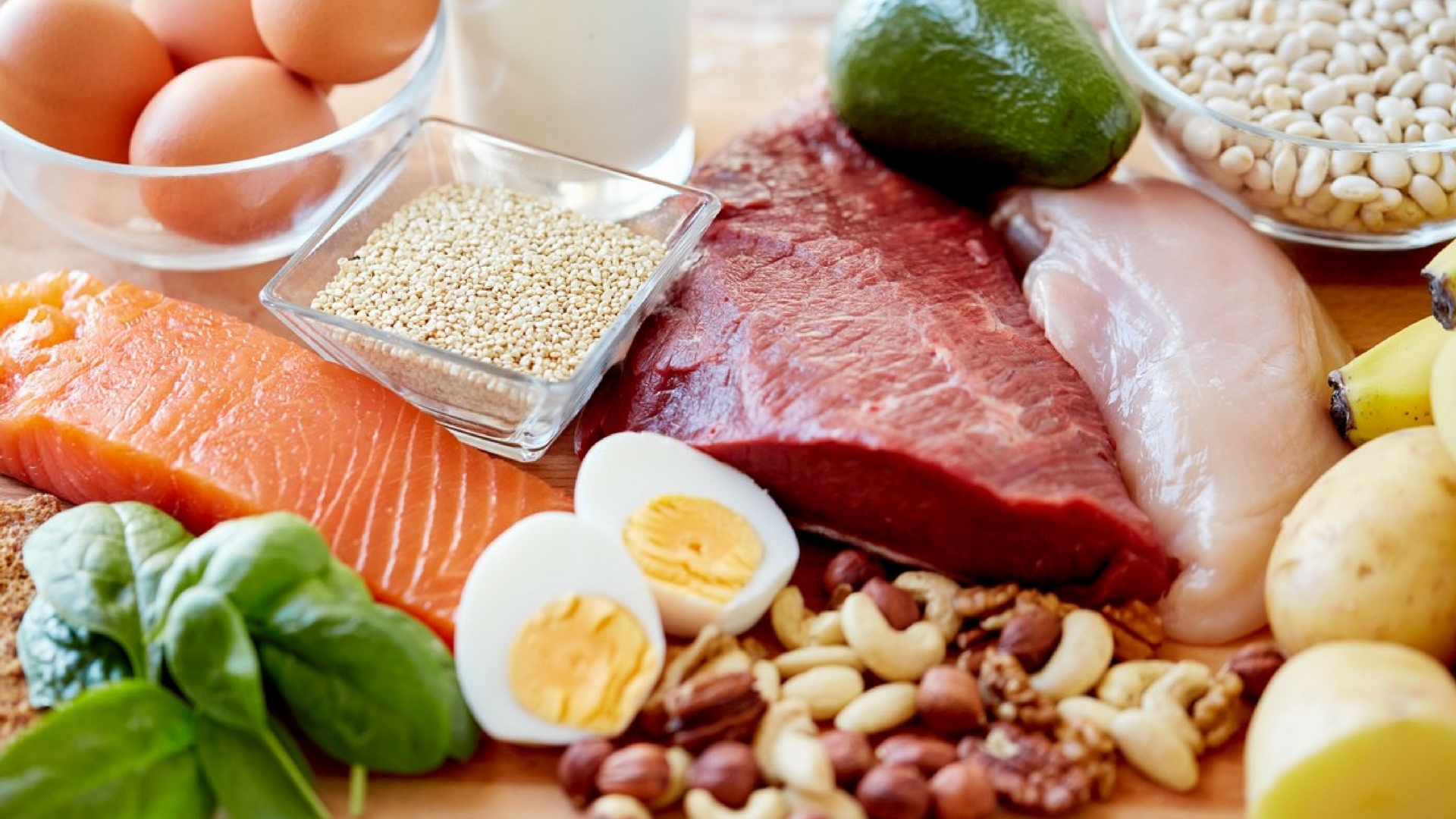“Most people think lean physiques are built on protein powders and shakes. Truth is the leanest people eat mostly REAL food.” – Jill Coleman
Protein, a macronutrient that every cell of your body needs, is an essential part of a healthy diet. Proteins are the main structural materials of the body, and have the most varied functions of any molecules in the body. Proteins make enzymes, hemoglobin, the contractile proteins of muscle actin and myosin, immunoglobins, hormones and more. There are both animal and plant sources of protein, each providing different types of protein – complete or incomplete.
A complete protein contains all nine of the essential amino acids that your body needs. Animal sources like lean meat and poultry are sources of complete protein.
An incomplete protein is missing one or more of the essential amino acids that your body needs. Plant sources like grains and legumes contain significant amounts of protein, but need to be combined with other incomplete proteins in order to provide all nine essential amino acids.
Combining incomplete proteins together, or eating a combination of complete and incomplete proteins, is a way to ensure you are getting all the essential amino acids your body needs. Here are complementary proteins that make complete proteins:
- Whole Grains + Legumes
- whole wheat bread with peanut butter
- brown rice and beans
- Whole Grains + Dairy
- granola and yogurt
- whole wheat pasta and cheese
- Vegetables + Dairy
- broccoli and cheese
- veggie lasagna with cheese
Protein intake should be measured on a daily basis, not necessarily on a per-meal basis. Growing kids need about 1 gram of protein per pound of body weight and adults need about ½ a gram of protein per pound of body weight. This isn’t difficult, as protein is found in many foods and can add up quickly!
If you’re a vegetarian, don’t worry! There are an abundance of plant-based protein sources including vegetables like tomatoes, spinach, broccoli and kale and legumes and beans like soybeans, kidney beans, tofu and lentils. Vegetarians need to think about their food groups. There are basically three groups: beans and pulses, grains and nuts and seeds. To get complete protein from one meal, you need to eat two of the three groups together. In other words, peanut butter (nut) on whole grain bread (grain); brown rice (grain) and lentils or peas (pulse); hummus (made from chickpeas, a pulse) and tahini (made from sesame seeds). Soybeans contain all the essential amino acids which makes tofu and tempeh great foods for vegetarians.
If you’re ready to explore a variety of plant and animal based protein options, but need help getting started, contact me to schedule a personalized coaching session and pantry makeover – the first step to a healthier you.
Karla Leal
Your Certified Health Coach
www.bloominghealthwellness.com


Recent Comments